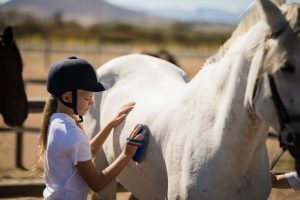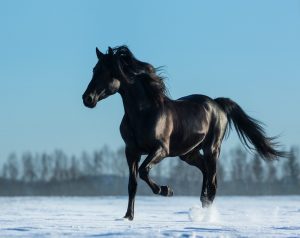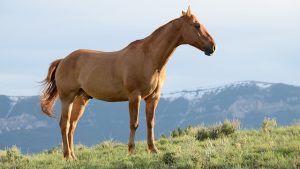Taking care of your horses’ coat and mane is an essential element of their wellbeing – a sign of a healthy and happy horse is a clean and glowing coat! Horse shampoo is one essential grooming product to maintain your horse’s overall hygiene.
Did you know… there are a variety of products designed to suit every horse’s hair and skin condition. For example, there are medicated horse shampoos available that can treat fleas and insects. There are also organic horse shampoos that can be used on horses with delicate skin, and that’s just a quick glimpse at the range of products you can get for your horse! No matter what your horse’s needs are, there is one horse shampoo that will surely fit their needs.
For this post, we have created a review and recommendation list of some of the best products you can get for your horse. Let us know what you think and share some of your grooming secrets with us. Enjoy!

The Best Horse Shampoos – Choose what works for you
Looking for the best shampoo and grooming products for your horse can be stressful and confusing with the wide range of products available. We all want the best products for our horses so, let’s try and break it down to simple facts and benefits…
1. Mane n’ Tail Shampoo
Perhaps one of the most popular grooming products, this brand has a great reputation – it’s even widely used on human hair to boost hair growth and thickness! This shampoo helps to maintain and achieve fuller, stronger, longer, healthier-looking hair.
This product has a micro enriched olive oil-based formula – What does this mean?
• The natural formula doesn’t strip the mane and tail of its natural oils, rather it helps to nourish the hair for a fuller and healthy appearance.
This shampoo is proven to be gentle on a horse’s skin and the fragrance helps in repelling insects away from your horses. Mane n’ Tail is also widely accessible, you can now pick it up in supermarkets and cosmetic stores. It’s available in a range sizes so you can bulk buy or test a sample size (available in 32 oz., 12 oz., and 2oz.). This is one of our favourites and if it works well with your horses’ coat it’s a quick and easy purchase for you!
Customer reviews also claim amazing improvements with their horse mane health and appearance. Let’s summarise:
• Affordable
• Widely accessible
• Natural olive oil formula
• Doesn’t strip natural oils from the mane
• Great results
2. Corona Concentrated Shampoo
Corona Concentrated Shampoo is a renowned brand used for Horses and other animals, so if you own other wild stock this could be the perfect product for you! What’s great about this shampoo is that it has pH balanced cleansers that lift dirt and grit tangled in your horses’ mane and tail. It’s also made with lanolin protein to help smoothly detangle the mane and give a ‘fuller’ look to the horses’ coat.
The product is tough enough to remove mud, manure and urine but is also gentle and cleansing leaving no signs of dryness or irritation on your horses’ skin. This award-winning concentrated horse shampoo has been proven to effortlessly clean and condition and leave your horse’s coat soft and lustrous. If you’re looking for value for money this is the product for you; you get over 125 washes per 32 oz bottle and approximately 400 washes per 3L bottle.
A quick summary:
• Affordable
• Gentle on sensitive skin
• Multipurpose
• Good value for money
3. Aloe advantage aloe iodine shampoo
This product is designed to treat any signs of skin conditions. It is enriched with skin and coat moisturisers with extracts of coconut, avocado, almond and sunflower oils to soothe and hydrate the skin.
So, how does it work?
Aloe advantage is one of the few plant-based shampoos. Its all-natural ingredients make sure that irritated skin is nourished and soothed. The product is enriched with coconut and avocado oil which are great for the skin. Both oils have medium-chain fatty acids which possess antimicrobial properties that help to protect the skin from harmful bacteria, reduces inflammation and assists with healing any wounds and dryness.

What’s the difference between organic and regular shampoos?
Organic shampoo tends to not create a huge lather compared to regular shampoos such as Mane n’ Tail, but that just makes it easier to rinse and cleanse. Even though this product is all organic you still get a great scent that is refreshing and soothing.
The only issue reported by customers is that the product can leave a slight residue that may attract dust so make sure to rinse it off thoroughly.
4. Dr. Muller Dermabenz-3 Shampoo
This product is another great solution for skin conditions and dryness. Customer reviews show that the shampoo is great for treating dermatitis, allergic reactions, dryness, and irritation. Dr Muller Dermabenz-3 Shampoo is a soap-free medicated solution shampoo that is proven safe and effective for the treatment of dehydrated and irritated skin. It also has a great citrus scent that helps to deodorize your horse’s body.
This shampoo ticks all the boxes and it’s a great product to have on hand, we would definitely recommend.
5. Pyranha pyrethrin shampoo
This product is designed to repel insects and treat insect prone coats, perfect for those warm summer months. If your horse is prone to attracting fleas, stable flies, horse flies face flies, deer flies, gnats or mosquitoes, this is the ideal product for you.
Don’t worry this product still focuses on scent and conditioning, it has all the benefits of other shampoos but with a touch of added care. For example, the shampoo includes coconut conditioners that help to nourish the skin and make the coat, mane and tail easier to detangle and maintain.
Pyrethrin Shampoo can be purchased in a 4 oz size, 12 oz and 32 oz bottles and is widely available in supermarkets and online. You can also use this product and cats and dogs, so if you’re looking for a one size fits all product, look no further!
Let’s look at the benefits:
• Multipurpose
• Conditions and strengthens hair
• Repels insects and flies
• Value for money
6. Pet MD antiseptic & antifungal medicated shampoo
The Pet MD Antiseptic & Antifungal Medicated Shampoo is used for the topical management of horses and pet’s skin problems and bacterial dermatitis.
This shampoo relieves fungal and bacterial skin infections like hot spots, ringworm, and acne and aids the healing process of skin infections, superficial cuts, abrasions, and insect bites. This is another medicated shampoo that contains active ingredients such as chlorhexidine and ketoconazole that help to clear skin infections and prevent new ones developing. The product is safe to use as normal and conditions the coat, mane and tail for a strong and shiny look.
PSA: as this product includes active ingredients we would recommend doing a quick patch test on your horse or pet to avoid any irritation or inflammation.
Proper usage of horse shampoo
Each product has a recommended dose and usage, so please read the labels and instructions on each product you purchase.
Generally, when bathing your horse, be careful not to use too much shampoo. For example, don’t pour shampoo directly on the horse’s coat and scrub it in as this may create a huge amount of suds which makes it hard to rinse and completely cleanse the coat. The best way to apply shampoo is by mixing a small amount of a horse shampoo with warm water, pour it over the horse’s entire body then gently scrub dirty spots using your hands, a body brush or sponge. When you are sure to have removed all the dirt from your horse’s body rinse it all off until the shampoo residue is gone.
How often should you bathe your horse?
Each horse requires different care, however, washing 2 or 3 times a week is generally a good routine to adopt for a glowing and nourished coat, mane and tail.

Make a DIY horse shampoo
It can also be fun to make your own horse shampoos! Especially if you can’t find a product that directly fits your horses’ needs. For example, you can add a little more oil if your horse happens to have a dry coat. Adding essential oils is great for aromatherapy purposes and scent, and they also hold anti-microbial properties which are great for helping to protect the skin from bacteria and dryness.
Here are some basic ingredients that you can use and mix to make a home-made horse shampoo for your horses:
- Liquid castile soap
- Avocado oil
- Distilled water
- Aloe Vera gel
- Glycerine
Homemade shampoos do not tend to last as long as shop-bought products so make sure to keep them refrigerated and replenish your stock consistently.
Incoming recipe tip:
A good idea for homemade horse shampoo is to use strong chamomile tea as a base. All you have to do is pour 5 cups of freshly boiled water over a container with 5 chamomile tea bags. Allow the tea to steep for about an hour, squeeze the tea bags to get their rich contents as you remove them from the container. Then add the castile soap and a tablespoon of glycerin to the mixture.
How to Bathe Your Horse
Preparing for a Bath
1.Gather your horse’s bathing essentials and the correct tools and supplies. It may include but not limited to, the following:
- A hose with an adjustable nozzle
- If there’s no available hot running water, you may use a big tub of water with buckets
- Sweat scraper
- Body brush
- Mane comb
- Curry comb
- Towels or chamois leather
- Sponges (prepare at least four because it’s better to have separate sponges for the body, under the tail, for drying the legs, and other areas that you can’t scrape)
- Hoof sealant with an applicator
- Mild shampoo and conditioner
- Rubber scrubbing mitt
- Stepstool or ladder
- Talc, ointment, or lotion
These bathing supplies might seem a lot, but each of them is important to ensure your horse will have a complete, refreshing, but safe bath.
2. After preparing all the tools and supplies, you may then tie up your horse with a quick-release knot in a place where water can quickly drain away. If there’s a wash rack or an area reserved for bathing horses in your stable, it would be best to bathe your horse in it.
Tip: We advise using a quick-release knot because it might injure itself or damage the fence or barn where you tied your equine if the horse panics. Therefore, to avoid mishaps, it’s better to use a knot that quickly unties the horse to prevent you from fumbling while the horse pulls the rope back.
3. After tying your horse up, it’s time to groom your horse by loosening the dirt and debris within its coat using a curry comb, which is made of either rubber or plastic. Work it in a circular motion around its body.
4. Then, remove the residues using a stiff-bristled dandy brush and brush it down to remove mud from the horse’s legs and hoof walls.
5. Using a wide-toothed mane comb, remove the debris and tease out the knots tangles in the horse’s mane and tail.
Tip: Don’t stand directly behind the horse when combing or washing the tail. Stand beside the horse’s rump instead and reach around to its tail to ensure you won’t be harmed if the horse kicks.
Bathing the Horse
1. Before applying any horse shampoo, it’s best to wet the horse first, just like how you would pre-rinse a car. Using a sponge or a hose with moderately warm water, wet the coat thoroughly all over.
Expert’s Tip: Every horse reacts differently when being washed. Trained horses are probably used to it while younger and inexperienced ones may feel agitated by the water. So, it would be best to start cleaning from their legs then move upwards gradually. It will help the horse to understand what you intend to do.
2. Now, it’s time to clean the horse’s anus and genitals using two separate clean wads of cotton wool or clean cloth for the anus and sheath. Washing the sheath and penis of a male horse needs gentle sponging and sponging of the area. You also need to check its penis if there are any potential abnormalities and clean the anus by wiping it with a damp cloth. If the cloth’s first area becomes soiled, use the other clean side and wipe it until the cloth comes away clean.
Tip: Don’t stand directly behind the horse when washing the anus. It’s best to stand to one side in case the horse kicks.
3. If the coat is already wet, you can now apply a coin-sized amount of horse shampoo into a damp sponge to create suds and work it into the skin in a circular motion from its neck to its leg areas, belly and genital area, and hind legs. Don’t forget to clean the mane and tail and wash the tail and put shampoo from the hair root to tip. And lastly, go over its whole body and scrub the suds with a mitt.
Note: Don’t leave the shampoo to sit too long and get dry because it can lead to a dry, dull coat. Additionally, shampooing too frequently may strip away the natural oil in the horse’s coat, which is essential for waterproofing the cot in bad weather or cold seasons.
4. After applying shampoo, you’ll need to rinse it well because the residue left on the skin, particularly on its back or stomach, can cause irritation and leads to a dull coat. With either a hose or a sponge soaked in a bucket of calm water, rinse the suds from the front legs to the equine’s shoulder. Then, continue to its neck and mane but make sure to avoid its head, and move on to its back, flanks, underside, legs, tails, and hind legs. Check if there is any foamy residue left on its coat or tail by moving the hairs apart with your finger.
5. Now, the last part is usually the trickiest, which is the horse’s head and face. Horses are typically sensitive about getting their face washed, making sure it is fully accustomed to water before cleaning is key. Using a sponge or rag soaked in warm water, wipe the entire face, following its hair’s direction. Avoid squeezing water into their eyes because it might upset them and cause unnecessary distress. If you have a rubber mitt, you may use it to scrub the extra-dirty areas.
It’s best not to use shampoo on its face; plain water can do the job, and don’t forget to rinse the horse’s face with a clean sponge dipped in warm water and wrung out.
Drying Your Horse
1. If there is no shampoo residue left, you may now stop rinsing and start drying it with a sweat scraper to remove excess water from its coat. If this tool is not available, you may use the edge of your hand to squeegee the water away. Then, using big towels, dry your horse’s head and get rid of all remaining moisture in its body, including the areas around and inside the ears.
2. After drying the horse’s body, you may now apply some ointment, lotion, or talc on its legs if necessary. A baby powder designed for sensitive skin can help to make them feel comfortable. If your horse has dry skin, you may opt for either an aloe vera lotion or baby lotion. However, horses with skin conditions use medicated lotions prescribed by their vets.
Trick: If you don’t want dirt or sand to stick onto their legs after applying ointment or lotion, you can put a bandage in it to cover and protect it.
3. Finally, after a thorough bath, you may gently comb the horse’s mane and take it for a ten-minute walk or so in the sun. But, if the weather is not ideal for a walk, you could also put on an anti-sweat sheet or cooler blanket on the horse.
If you have any home recipes of your own, feel free to share them with us!




